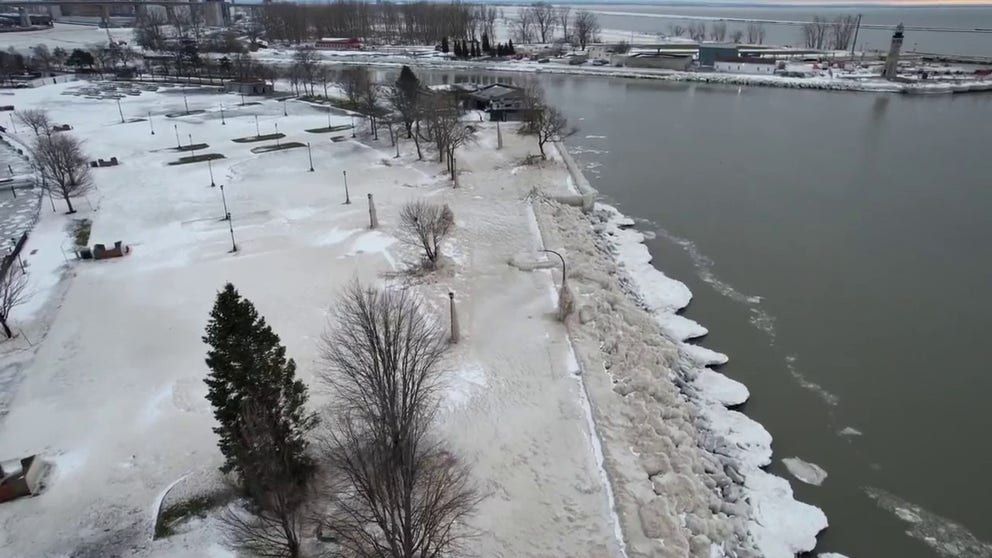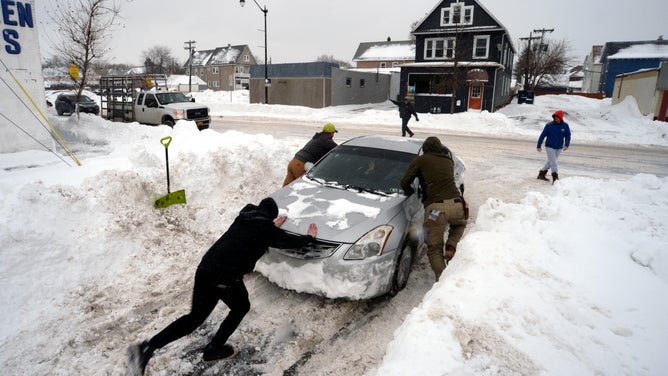Watch: Aerial video shows icy effects of seiche from Buffalo blizzard
Seiches happen when wind blows across a large body of water, creating a drop in water levels on one side and a rise in water levels on the other.
Icy mess in Buffalo
A big seiche continues to keep areas along Lake Erie closed due to water turning into ice.
As Buffalo works to recover from a blizzard that rocked western New York with hurricane-force winds and feet of snow, impacts from a little-known phenomenon known as seiche continue to be spotted along Lake Erie’s waterfront.
Video taken Wednesday from near the Erie Basin Marina showed ice-covered benches, roads and utility poles.
The ice formed when water from the warm lake splashed ashore amidst waves that topped 20 feet during the arctic air mass.
THESE FACTORS COMBINED TO MAKE THE DEADLY HOLIDAY BLIZZARD IN NEW YORK A CATASTROPHE
As Sir Isaac Newton once stated: "For every action, there is an equal and opposite reaction," and that could not be truer for water levels in the nearly 10,000-square-mile lake.
As water piled up on the eastern shores, areas farther west, particularly around Ohio, saw a dramatic decrease in water levels, exposing areas of the lakebed not seen in decades.
Seiches are common along the Great Lakes, but seeing such dramatic impacts from a winter bomb cyclone is a relatively rare event.
The National Oceanic and Atmospheric Administration said a 22-foot seiche in 1844 killed 78 people when the water broke through a seawall in western New York. In 2008, waves over 12 feet high caused flooding near Buffalo during a seiche.
LAKEFRONT NEIGHBORHOOD TRANSFORMS INTO SURREAL FROZEN WONDERLAND AFTER BLIZZARD’S ONSLAUGHT

Predicted seiche water levels in Lake Erie before the deadly holiday blizzard.
(NOAA)
NOAA said the phenomenon is similar to the effect of sloshing inside a bathtub or even the high and low tides of an ocean.
Experts said an event can last hours or even days and the most recent instance from the holiday blizzard is no exception.
Forecast data showed that the seiche's effects have entirely relaxed, and water levels are back to normal from Toledo, Ohio, to Buffalo.
Despite the lifting of the nearly week-long driving bans, many ice- and snow-covered roads remain in Western New York.
Sights of the ice will likely be a vision of the past in only a matter of days. Both high and low temperatures are expected to remain above freezing for the foreseeable future, leading to fast melting of December's snow and ice.







